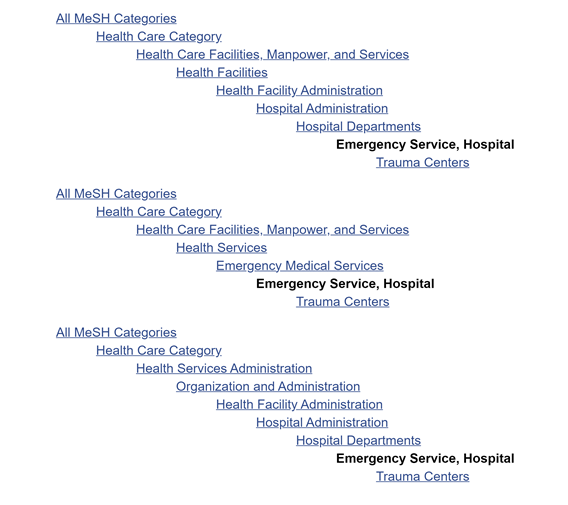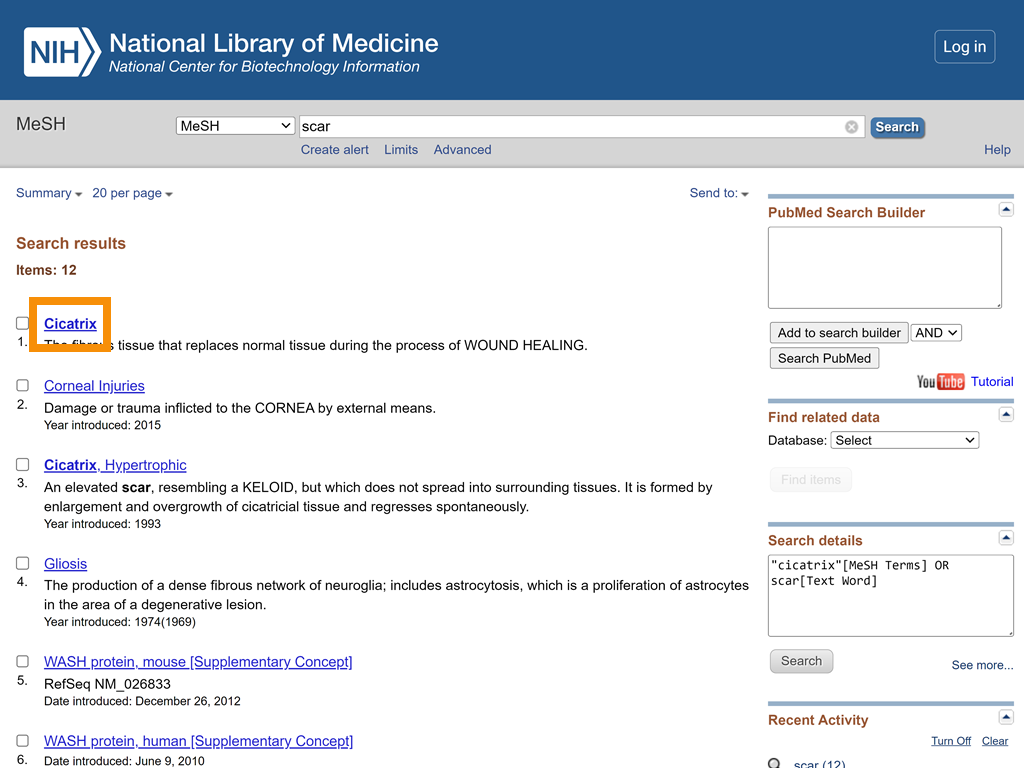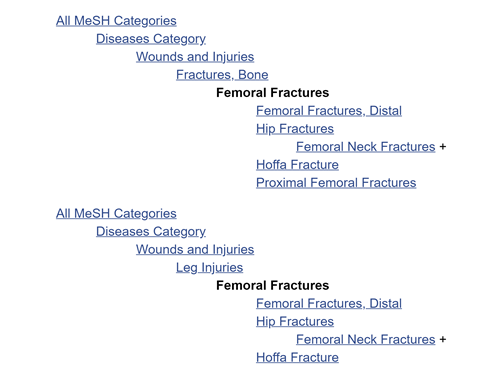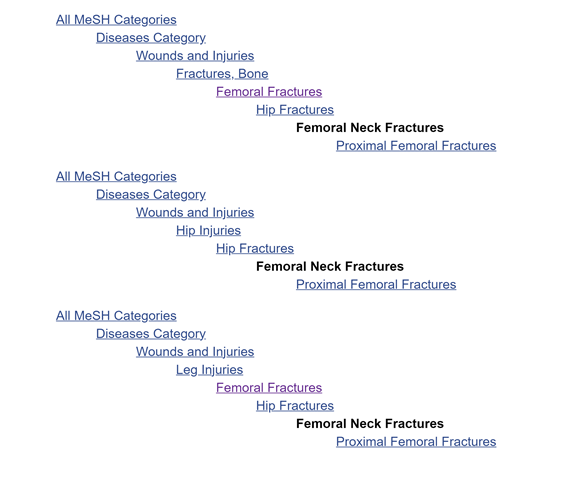How Do I See and Document What PubMed Is Searching?
MeSH Database
The MeSH Database is the NLM controlled vocabulary thesaurus.
MeSH terms are organized into a hierarchy, with broader and narrower terms. If your search maps to any MeSH terms, PubMed will automatically explode them to include narrower terms in the MeSH hierarchy. You can view narrower terms in the MeSH Database, which can be accessed from any PubMed page from the menu at the bottom.
In the MeSH hierarchy, Emergency Service, Hospital includes the narrower term Trauma Centers. Both of these terms would be included in your search for emergency room.
Emergency room is an entry term for Emergency Service, Hospital, which is why Emergency Service, Hospital and its narrower terms are included. This is what the hierarchy for Emergency Service, Hospital looks like in the MeSH Database:
All narrower terms will be included in your search. If your term is located in the MeSH hierarchy in multiple places, narrower terms from each place will be included. Additionally, some narrower terms might have their own narrower terms, and those will be included too.
For example, the term scar automatically maps to Cicatrix.
In the MeSH Database, Cicatrix is in the MeSH hierarchy in three places with five narrower terms. One of its narrower terms, Keloid, includes its own narrower term, Acne Keloid, which is also included in your search for scar.
To document your explosions, copy all of the narrower terms from each branch listed.
If you see a plus sign (+) beside a term in the hierarchy, then you should check to see if that term has additional narrower terms that will be included in your search.
For example, the hierarchy in the MeSH record for Femoral Fractures lists five narrower terms, and one of those, Femoral Neck Fractures, has a plus sign (+) beside it.
If you view Femoral Neck Fractures in MeSH, you’ll see it has one additional narrower term, Proximal Femoral Fractures, that would be included in your search for Femoral Fractures.






